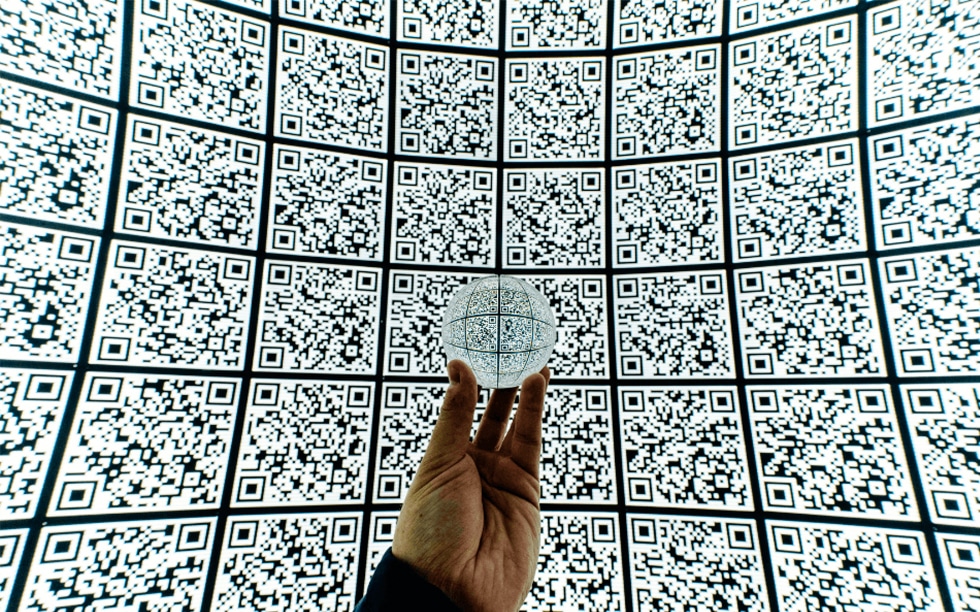Apr 21, 2023
—
In recent years, QR code ads have been getting lots of buzz in marketing circles—with most conversations centering around using them in performance TV campaigns to drive outcomes. The evolution of QR code formats in recent years has led some marketers to seek a refresher course on the subject. So, what are QR code ads,…

In recent years, QR code ads have been getting lots of buzz in marketing circles—with most conversations centering around using them in performance TV campaigns to drive outcomes.
The evolution of QR code formats in recent years has led some marketers to seek a refresher course on the subject.
So, what are QR code ads, and what’s the best way to use them in your digital advertising campaign?
QR codes were created by Denso Wave, a Toyota subsidiary, in 1994 as a way to track vehicles and their parts during the manufacturing process more accurately. While Denso Wave’s creation certainly wasn’t dormant in the years following, QR codes didn’t see widespread adoption until the 2020 COVID-19 pandemic, when contactless mobile payment became necessary—leading to the widespread acceptance of QR codes globally.
This, along with the rise of smartphone usage and streaming content consumption during the pandemic, created an opportunity for marketers to pivot to using QR codes in their connected TV campaigns.
QR codes deliver an innovative, immersive, and intent-driven consumer ad experience that matches perfectly with the eye-grabbing nature of television ads.
Pair this with the fact that 70% of consumers use mobile devices while watching TV, according to Marketing Dive, and you have the perfect opportunity for QR code ads to thrive.
For example, in their 2022 spot for The Big Game, crypto tycoon Coinbase created the most talked about ad of the year by displaying a simple color-changing QR code that bounced around viewers’ screens for 30 seconds.
Scanning the code led users to their crypto exchange platform, where they were given $15 of Bitcoin to create an account.
Crypto and tech companies aren’t the only ones using QR codes in their connected TV campaigns. Legacy brands like Burger King and Lacoste are also getting in on the action—proving the simple, efficient, results-driven nature of QR code advertising is here to stay.
QR code stands for “Quick Response Code,” which is probably the simplest definition of what this 2D barcode does.
Similar to barcodes you find at grocery stores, QR codes are made up of black squares and tiny dots representing different pieces of information. Once scanned by your smartphone, these unique patterns translate into human-readable data such as menus, landing pages, and websites.
There are two types of QR codes you should be aware of while developing your ads strategy.
Static QR codes are permanent and cannot be modified once they go live—making it even more important to be sure you eliminate all typos. Because these codes never expire, they are ideal for storing fixed information.
You can use static QR codes for email addresses, texts, WiFi passwords, social media links, and much more.
The three main features of static QR codes are:
Dynamic QR codes can be modified and store more data after posting.
This type of QR code is ideal for those looking for more access to monitoring real-time scans and the location of where people are scanning.
Some, but not all, of the features of dynamic QR codes, include:
The days of static CTV ads are over, and QR codes are leading the way. Including a QR code in your CTV ad on platforms like YouTube TV gives your audience an easy way to visit your landing page and engage with your product. Plus, the ability to measure the traffic from your CTV ad means you can optimize your campaign in real time.
But QR codes aren’t just a novelty—they can significantly impact your bottom line. With the right call-to-action, your QR code can drive highly-targeted audiences to product pages and checkout screens, boosting conversions and increasing revenue. Marketers serious about meeting their lower-funnel KPIs should pay attention to QR codes’ power and other interactive ad formats.
If used correctly, QR codes can spike the curiosity of your customers and prospects alike.
Here are some tips for maximizing campaign performance:



Regardless of your digital campaign objectives, finding a partner that can seamlessly optimize your strategy is essential. With Digital Remedy, you can leverage dynamic creative video, including adding and optimizing QR codes for CTV and inserting a QR code add-on to a raw asset CTV file. This helps to further engage with users in a CTV environment and prove your conversion was because of direct interaction with an ad.
With our always-on ad serving, personalization, and measurement, we can help you choose the best QR code campaign to maximize your ROAS.
Digital Remedy partners with a leading offline-to-online (O2O) tech platform powered by next-generation QR codes. Decide on custom designs; we’ll help you decide on the best place to send consumers after they scan and optimize for maximum scannability. Data dashboards and reports can be customized based on your KPIs. Reporting includes variables to test, data insights, and overall learnings. We provide real-time analytics, geo-location data, and attribution across screens.
Ready to take your CTV campaigns to the next level with QR codes? Speak with a member of our team to learn more.
Related Posts

Staying ahead as a full-service digital marketing agency is no small feat. Between evolving consumer behaviors, rising client expectations,.

In today’s fast-paced digital advertising world, full-service agencies are embracing forward momentum and finding new opportunities to scale their.

In Part 1 of our Intro to Incrementality series, we covered the fundamentals-measuring incremental lift by comparing test (exposed).